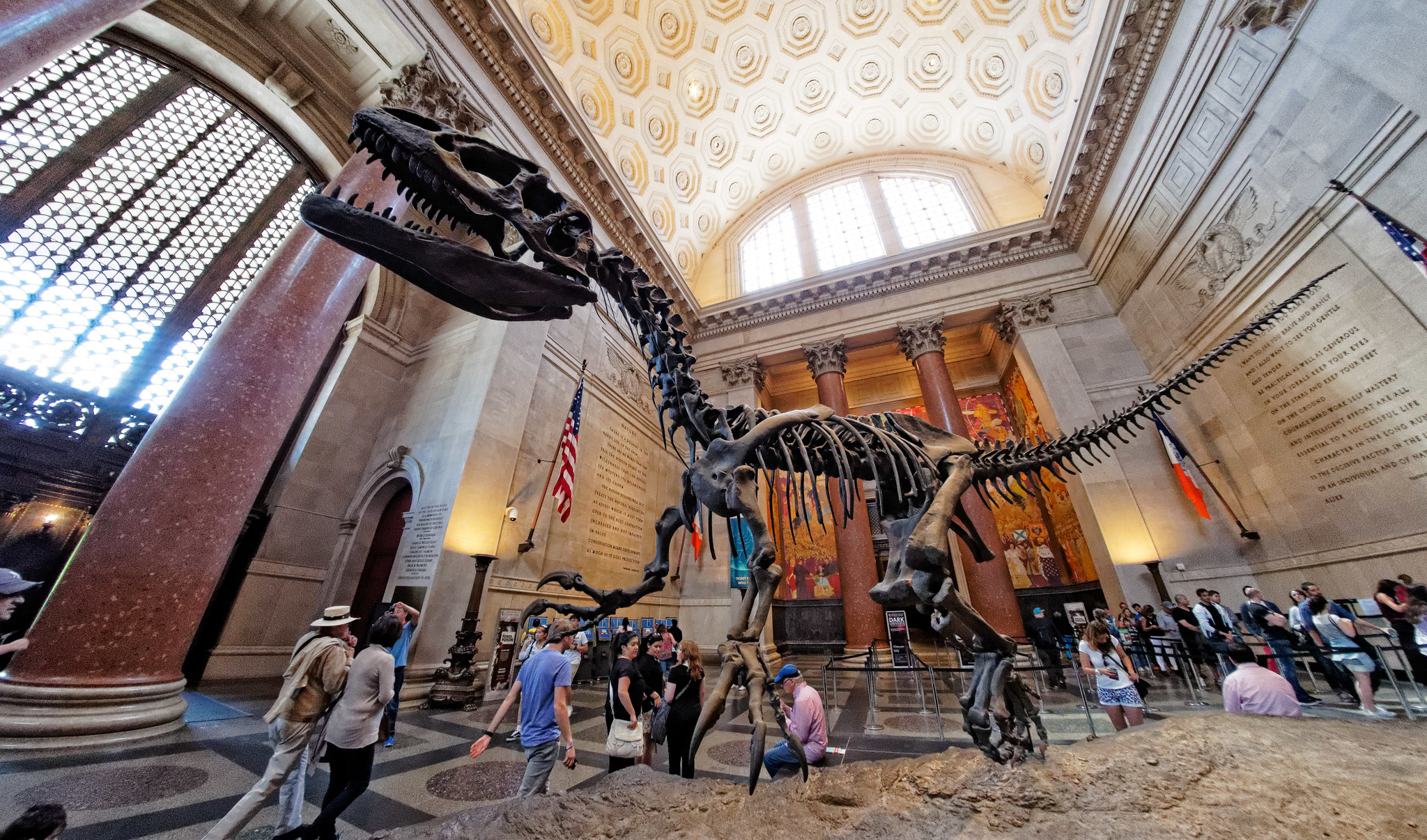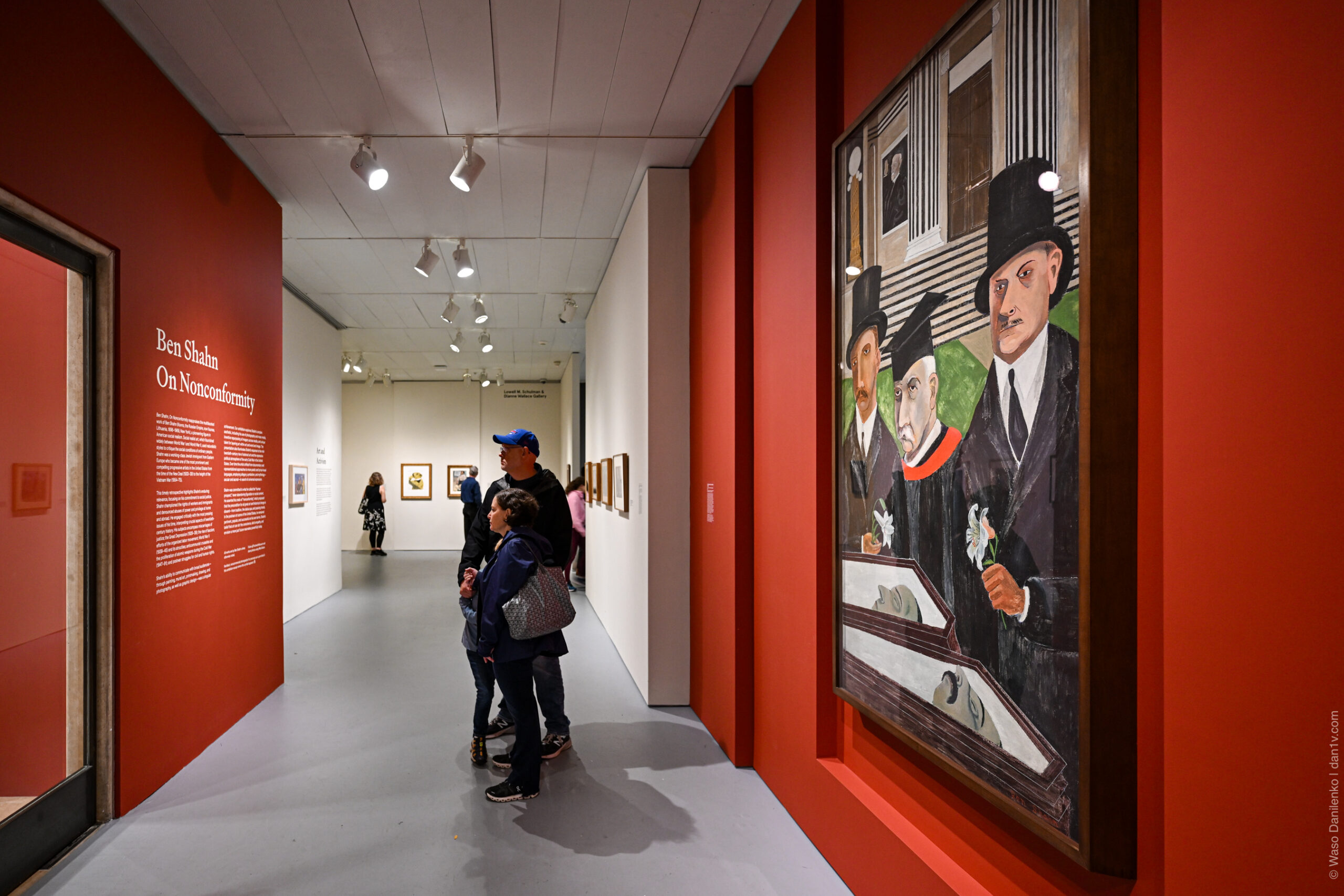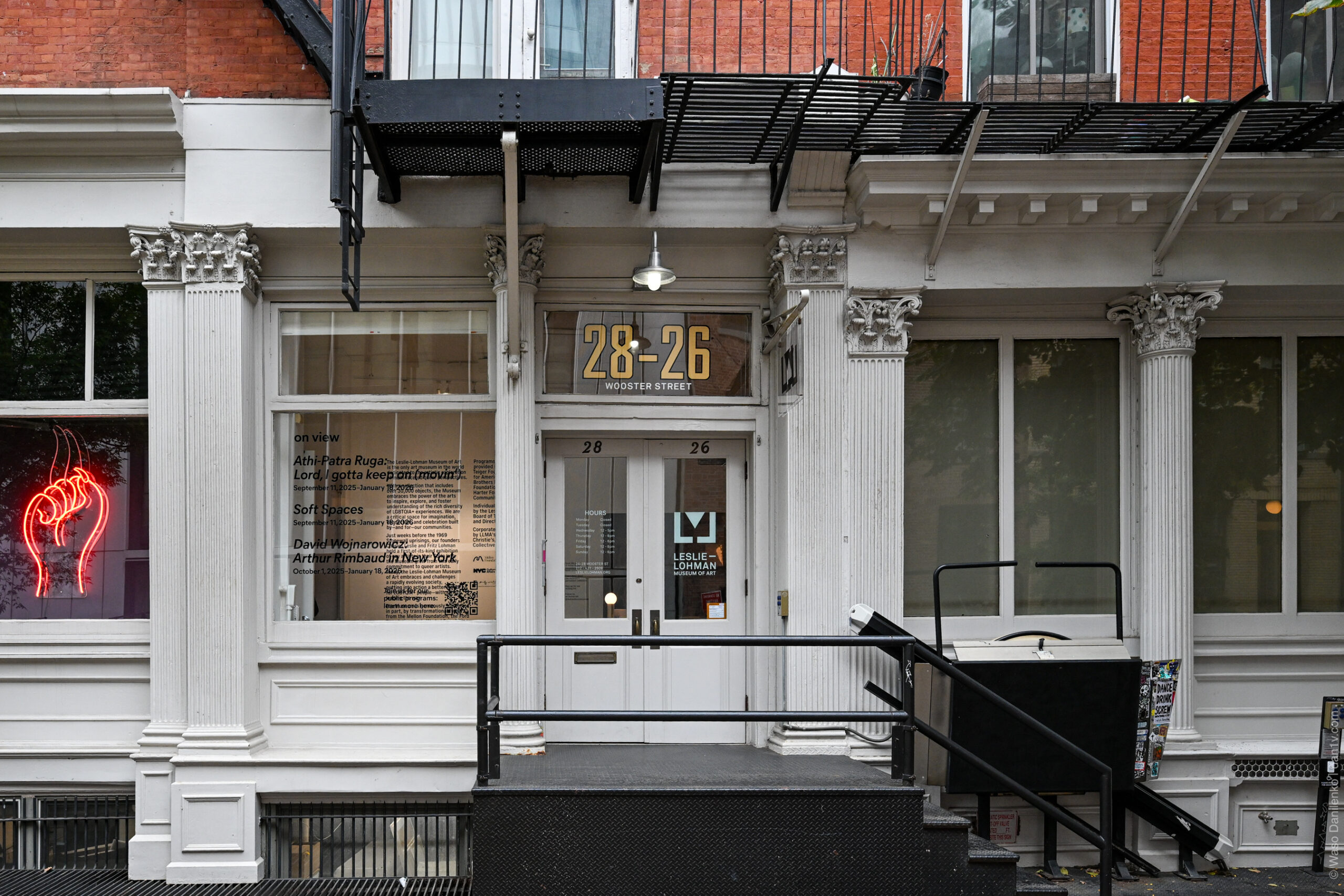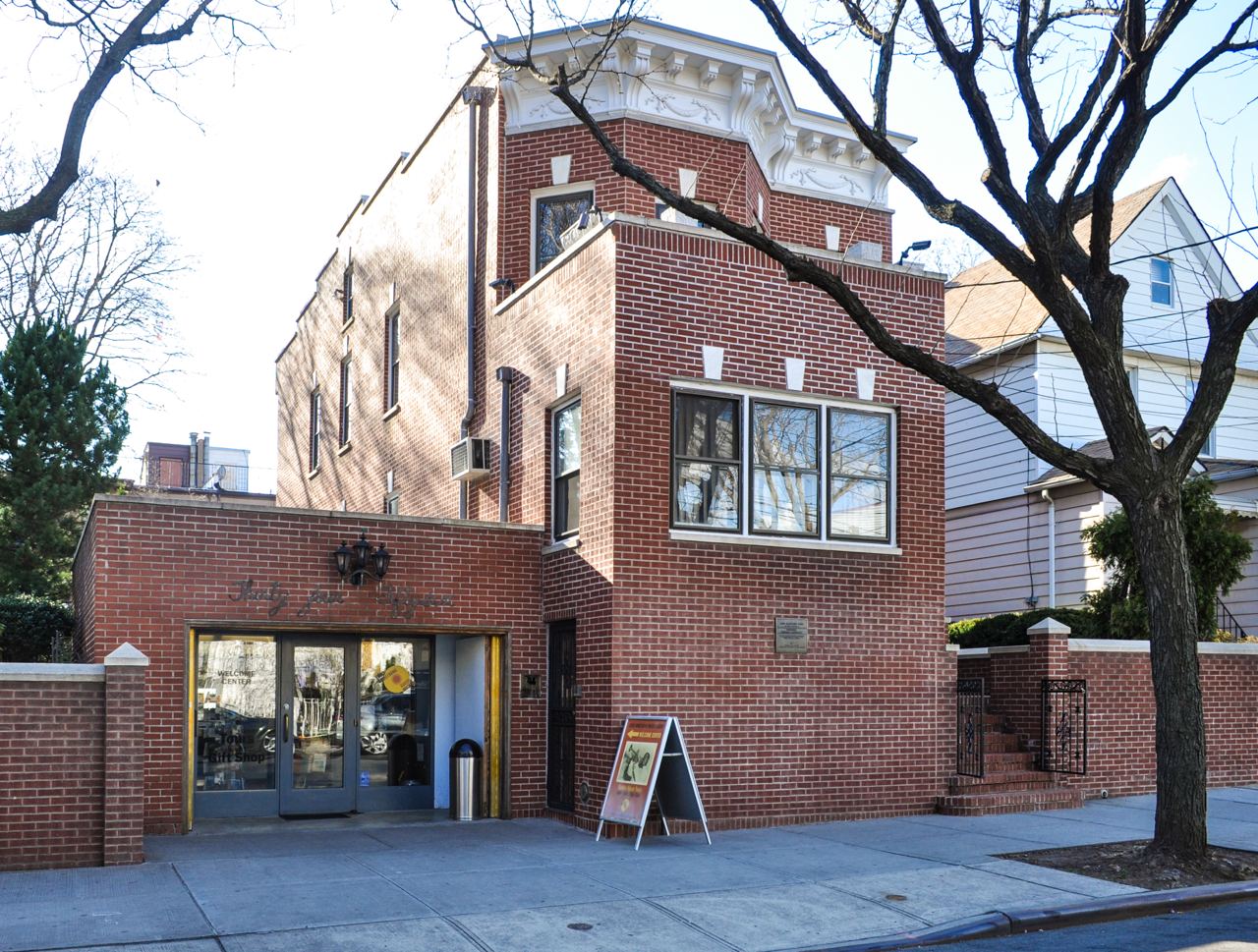The American Museum of Natural History is one of the largest and most famous museums in the world, located in Manhattan, New York City, right next to Central Park. More than 5 million people visit it every year.
It’s the very same museum featured in the popular film Night at the Museum. While most of the movie was filmed on a studio set, the facades and interiors were faithfully recreated. Walking through the first floor, you journey through the entire story of human evolution — from our earliest steps to modern times. Here you’ll find massive dinosaur skeletons, a unique collection of gemstones including the world’s largest topaz, and a futuristic planetarium that shows how our galaxy has changed over time.
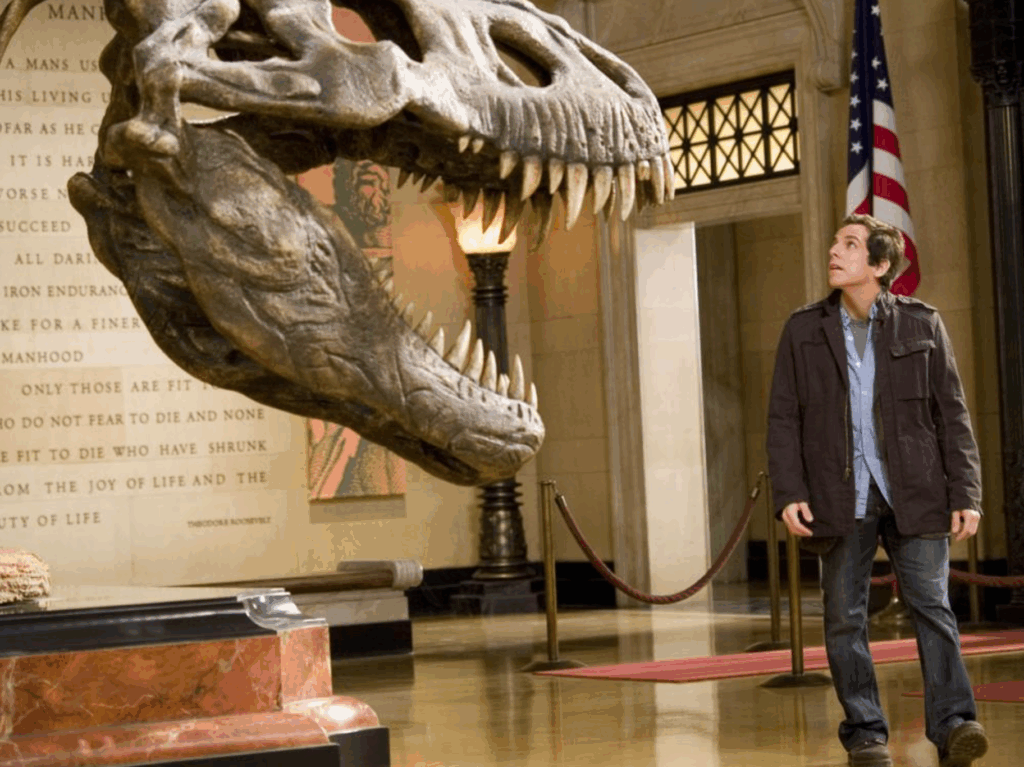
Founding History
The museum was founded in 1869 on the initiative of a group of New York scientists and philanthropists, including Theodore Roosevelt Sr.
The main entrance hall on Central Park West is officially named the New York State Theodore Roosevelt Memorial. Completed in 1936 by architect John Russell Pope, it is a monumental structure dedicated to the former U.S. president.
At first, the museum’s collections were housed in the Central Park Arsenal, but in 1877 AMNH moved to its current location. From the late 19th century onward, it began sending expeditions all over the world — to Asia, Africa, the Arctic, the Amazon, and beyond — greatly enriching its collections.

Collection
AMNH spans 190,000 m², consisting of 26 interconnected buildings and more than 45 permanent exhibition halls. Its collections include over 34 million specimens, though only a small fraction are on display at any given time.
Dinosaurs
The museum is world-famous for its dinosaur skeletons, including Tyrannosaurus rex, Triceratops, and Apatosaurus (Brontosaurus).
- Tyrannosaurus rex: Almost entirely made up of real fossilized bones, posed in a dramatic horizontal chase stance.

- Apatosaurus (Brontosaurus): Nearly 30 meters long. Its body is original, but the skull is a later cast — since none were found with the skeleton at the time.
- Edmontosaurus annectens: A rare “mummified dinosaur” with preserved skin impressions. Displayed in the same curled position in which it was discovered.
- Andrewsarchus mongoliensis: The only known skull of this prehistoric predator.
One hidden gem is a real dinosaur footprint fossil set into the floor — most visitors walk over it without even noticing!
Mammals
The museum is renowned for its realistic dioramas that recreate ecosystems around the world.
- Akeley Hall of African Mammals: Named after taxidermist Carl Akeley, this two-story hall features 28 breathtaking dioramas, including the iconic centerpiece of eight African elephants in an “alert” stance. Completed in 1936.
- Hall of Asian Mammals: Opened in 1930, this hall features elephants, tigers, and other species in eight full and several partial dioramas representing India, Nepal, Burma, and Malaysia.
Hall of Human Origins
An interactive exhibition tracing the evolution of humanity, from australopithecines to modern Homo sapiens.
- First opened in 1921 as the “Hall of the Age of Man,” it was the first major U.S. exhibition dedicated to human evolution.
- Displays include life-size dioramas of Australopithecus afarensis, Homo ergaster, Neanderthals, and Cro-Magnons, showing their possible behaviors.
- Fossil replicas: Lucy (3.2 million years old), the Turkana Boy (1.7 million years old), and Homo erectus, including a copy of the Peking Man skull.
- Also features Ice Age cave art reproductions from Dordogne, France, including 26,000-year-old horse carvings.
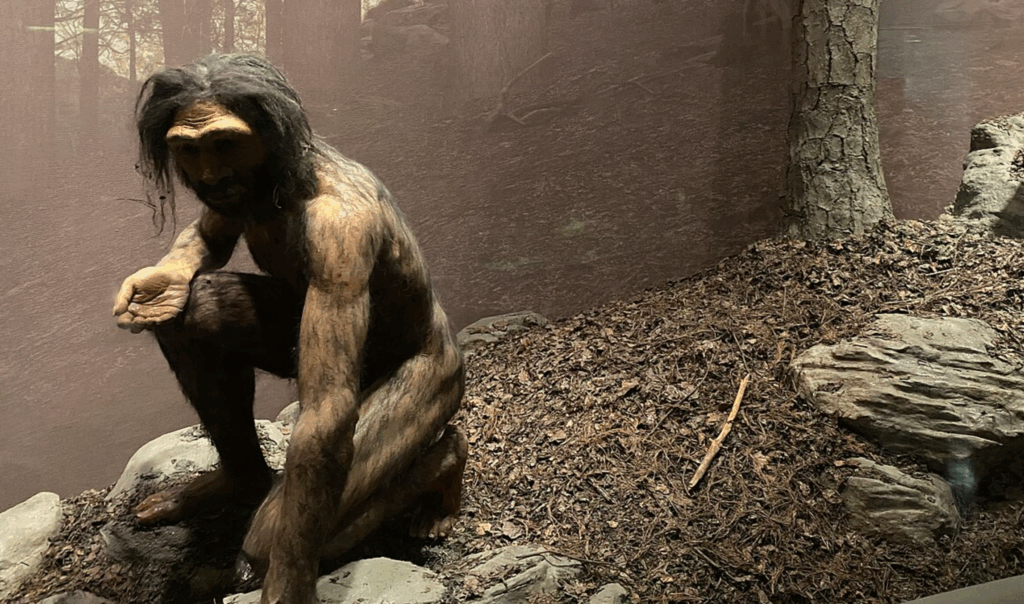
Hall of Ocean Life
Famous for its 28-meter-long blue whale model suspended from the ceiling — one of the museum’s most photographed sights.
- The upper level showcases diverse marine ecosystems: kelp forests, mangroves, coral reefs, and deep-sea zones.
- The lower level includes 15 large dioramas, notably the dramatic giant squid vs. sperm whale battle and the Andros coral reef, spanning two floors.
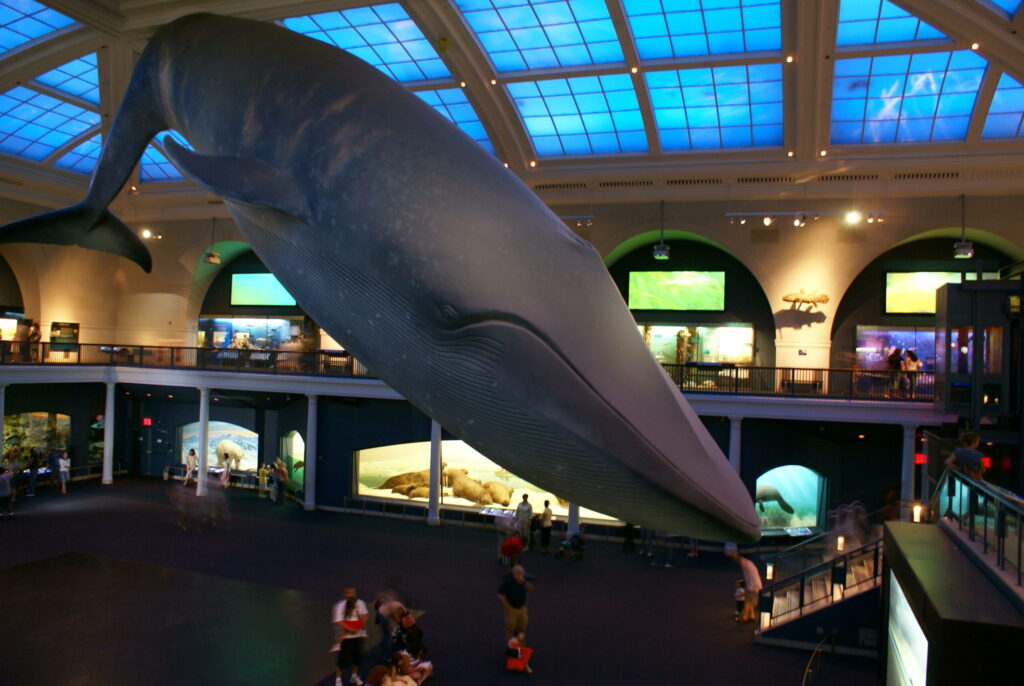
Hall of Gems and Minerals
Here you’ll find rare minerals, gemstones, and meteorites, including the 34-ton Cape York iron meteorite from Greenland. It’s so heavy it had to be mounted on supports anchored deep into the bedrock.
Special Centers
- Rose Center for Earth and Space (opened 2000): Houses the cutting-edge Hayden Planetarium, astrophysics department, and the popular Scales of the Universe exhibit.
- Richard Gilder Center for Science, Education, and Innovation: The museum’s newest wing, designed by Studio Gang. Its organic cave-like architecture houses a butterfly conservatory, interactive exhibits on cells and ecosystems, labs, and classrooms.
Research and Education
AMNH is also a leading research institution, with 200+ scientists working in fields from astrophysics to anthropology. It partners with NASA and conducts global fieldwork. Only 5% of its 34 million specimens are on display; the rest are kept in scientific archives and labs.
The museum offers extensive educational programs, including lectures, school courses, and even a graduate program in science and education — making it one of the few museums worldwide with degree-granting status.
Its research library, on the fourth floor, contains materials dating back to the 15th century, covering zoology, geology, anthropology, and other sciences.
Visitor Information
Website: www.amnh.org
📍 Address: 200 Central Park West, New York City
Admission: Pay-what-you-wish (general entry)

